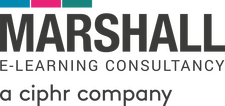
Unconscious Bias and Higher Education: training staff creates open, inclusive, effective organisations
Unconscious gender and racial biases still pervade academia and unconscious bias remains a big challenge in the higher education sector.
As far back as 2004, it’s been an issue. Professor Steven Schwartz stated in his landmark report Fair Admissions to Higher Education:
“a fair admissions system is one that provides equal opportunity for all individuals, regardless of background, to gain admission to a course suited to their ability and aspirations.”
To help address this issue, UCAS – the Universities and Colleges Admissions Service in the UK – recently undertook a consultation with the Higher Education sector about the feasibility of introducing name-blind applications and pre-discussed selection criteria, since this approach has been successful in addressing bias in recruitment in other sectors.
UCAS noted concerns that well-qualified candidates do not receive offers from universities and colleges because of bias in the admissions process. David Cameron, when Prime Minister, raised concerns in a Guardian article about the disparity in offer rates to black and white applicants:
“Some research has shown that top universities make offers to 55% of white applicants, but only to 23% of black ones. The reasons are complex, but unconscious bias is clearly a risk. So we have agreed with UCAS that it will make its applications name-blind, too.”
We define Unconscious Bias as relating to the associations that we hold which, although outside our conscious awareness, may have a significant influence on our attitudes and behaviour. However fair minded we think we are, most people have some degree of unconscious bias.
The Higher Education system should aim to effectively promote and apply equality of access and opportunity for everyone, not specific particular groups, and it should not exclude disability or any other protected characteristic.
Challenging unconscious bias begins with fair, inclusive and transparent selection criteria, but here are three further ways to address Unconscious Bias in Higher Education.
1. Moral responsibility
Individuals and institutions have a moral responsibility to recognise their implicit biases. Higher Education professionals and institutions need to be effective with decision-making based on evidence and fact, not on stereotypes and assumptions.
In Higher Education, making biased decisions affects selection and recruitment of staff and students, and their ability to achieve their full potential. There’s a tendency to suppose that an egalitarian mindset and diverse student intake are all that is required.
It is not sufficient to prepare written equality and diversity policies – those policies need to be put into practice, demonstrating a commitment to diversity and equality. What’s required is a culture of equality supported by transparency around the decision-making process, where decisions are fully documented in a standardised, consistent manner so as to show why decisions were made.
2. Raise awareness
For Higher Education, this is an issue they have been trying to tackle for some time with staff urged to be objective and consistent in the recruitment and admission of students.
It’s important for providers to raise awareness around the issue and to promote understanding and develop processes to support informed judgement, for staff, applicants and advisers.
We need and deserve a higher education system that promote equality for those of all races, genders and ethnicities, there are some simple steps to consider:
- Build a culture of inclusivity, fairness and openness
- Value diversity
- Avoid the use of stereotypes
- Facilitate transparency
- Train staff to recognise bias and to promote equality
3. Objectivity and a culture of openness
No matter how much we focus on challenging our own biases, true objectivity is difficult. Building a culture around “equality” is bound to fail with our natural pre-conceived biases.
Instead, the goal of a higher education institution should be to try to build a culture of inclusivity and fairness. The key to achieving this culture is to ensure you have an open and transparent application process with inclusive and fair procedures and policies.
Sticking to these inclusive policies (and being open about how you do this) will help to highlight the mind’s unconscious stereotyping of minorities along the way.
With the right approach we can ensure our institutions provide an equal opportunity for all.
Training Higher Education staff in Unconscious Bias
With the right training and understanding, we can overcome unconscious bias to improve decision making and to create more open, inclusive and effective organisations.
Notes
More about unconscious bias training for admissions teams is available from Marshall E-Learning's website: Unconscious Bias course.

